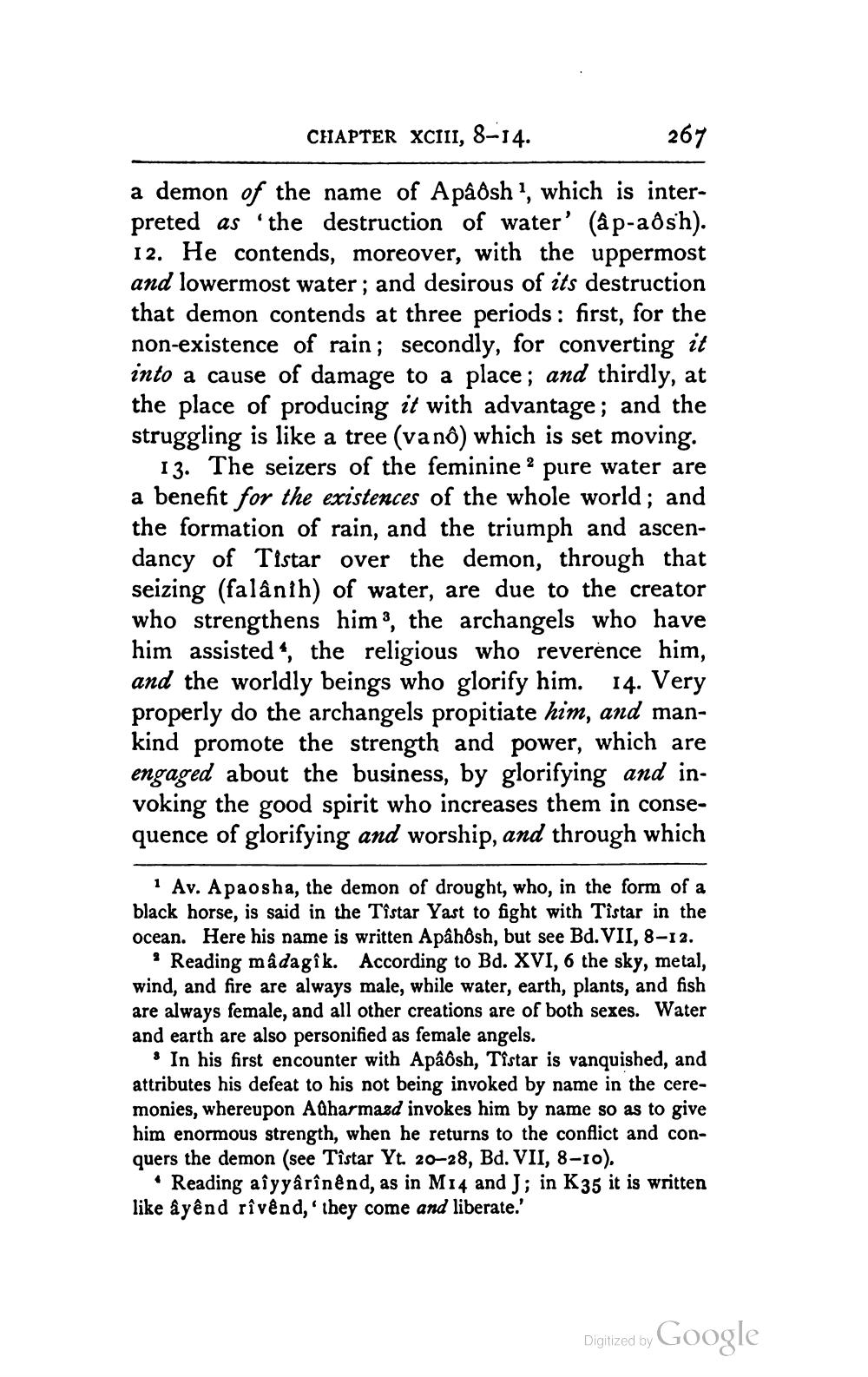________________
CHAPTER XCIII, 8-14.
267
a demon of the name of Apâôsh, which is interpreted as the destruction of water' (âp-aðsh). 12. He contends, moreover, with the uppermost and lowermost water; and desirous of its destruction that demon contends at three periods: first, for the non-existence of rain; secondly, for converting it into a cause of damage to a place; and thirdly, at the place of producing it with advantage; and the struggling is like a tree (va nô) which is set moving.
13. The seizers of the feminine ? pure water are a benefit for the existences of the whole world; and the formation of rain, and the triumph and ascendancy of Tistar over the demon, through that seizing (falânih) of water, are due to the creator who strengthens him?, the archangels who have him assisted", the religious who reverence him, and the worldly beings who glorify him. 14. Very properly do the archangels propitiate him, and mankind promote the strength and power, which are engaged about the business, by glorifying and invoking the good spirit who increases them in consequence of glorifying and worship, and through which
1 Av. Apaosha, the demon of drought, who, in the form of a black horse, is said in the Tîstar Yast to fight with Tîstar in the ocean. Here his name is written Apâhôsh, but see Bd.VII, 8-12.
? Reading madagîk. According to Bd. XVI, 6 the sky, metal, wind, and fire are always male, while water, earth, plants, and fish are always female, and all other creations are of both sexes. Water and earth are also personified as female angels.
* In his first encounter with Apaosh, Tistar is vanquished, and attributes his defeat to his not being invoked by name in the ceremonies, whereupon Adharmazd invokes him by name so as to give him enormous strength, when he returns to the conflict and conquers the demon (see Tîstar Yt. 20–28, Bd. VII, 8-10).
Reading aiyyârînênd, as in M14 and J; in K35 it is written like a yênd rîvênd, they come and liberate.'
Digized by Google




